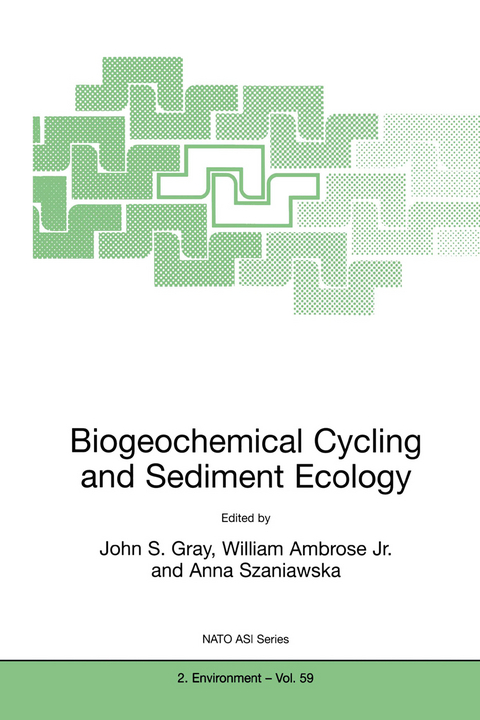
Biogeochemical Cycling and Sediment Ecology
Springer (Verlag)
978-94-010-5962-6 (ISBN)
Oceanographic discontinuities (e. g. frontal systems, upwelling areas, ice edges) are often areas of enhanced biological productivity. Considerable research on the physics and biology of the physical boundaries defining these discontinues has been accomplished (see [I D. The interface between water and sediment is the largest physical boundary in the ocean, but has not received a proportionate degree of attention. The purpose of the Nato Advanced Research Workshop (ARW) was to focus on soft-sediment systems by identifying deficiencies in our knowledge of these systems and defining key issues in the management of coastal sedimentary habitats. Marine sediments play important roles in the marine ecosystem and the biosphere. They provide food and habitat for many marine organisms, some of which are commercially important. More importantly from a global perspective, marine sediments also provide "ecosystem goods and services" [2J. Organic matter from primary production in the water column and contaminants scavenged by particles accumulate in sediments where their fate is determined by sediment processes such as bioturbation and biogeochemical cycling. Nutrients are regenerated and contaminants degraded in sediments. Under some conditions, carbon accumulates in coastal and shelf sediments and may by removed from the carbon cycle for millions of years, having a potentially significant impact on global climate change. Sediments also protect coasts. The economic value of services provided by coastal areas has recently been estimated to be on the order of $12,568 9 10 y" [3J, far in excess of the global GNP.
Geochemistry of Organic Carbon in the Ocean.- Primary Production and Decomposition of Organic Matter in Coastal Areas of the Northern Aral Sea, with Special Reference to Land-Sea interactions.- Biogeochemistry of Water and Sediment in the OB and Yenisey Estuaries.- The Continental-Ocean Boundary as a Marginal Filter in the World Oceans.- Unjustifiably Ignored: Reflections on the Role of Benthos in Marine Ecosystems.- Understanding Small-Scale Processes Controlling the Bioavailability of Organic Contaminants to Deposit-Feeding Benthos.- The Role of the Marine Gastropod Cerithium Vulgatum in the Biogeochemical Cycling of Metals.- Changes in Macrozoobenthos Communities Induced by Anthropogenic Eutrophication of the Gulf of Gdansk.- Do Benthic Animals Control the Particle Exchange between Bioturbated Sediments and Benthic Turbidity Zones?.- Impact of Catchment Land-Use on an Estuarine Benthic Food Web.- Natural Variability and the Effects of Fisheries in the North Sea: towards an Integrated Fisheries and Ecosystem Management?.- Community Composition of Tidal Flats on Spitsbergen: Consequence of Disturbance?.- The Problem of Scale: Uncertainties and Implications for Soft-Bottom Marine Communities and the Assessment of Human Impacts.- Understanding the Sea Floor Landscape in Relation to Impact Assessment and Environmental Management in Coastal Marine Sediments.- Conclusions and Recommendations.
| Reihe/Serie | NATO Science Partnership Sub-Series: 2 ; 59 |
|---|---|
| Zusatzinfo | XII, 236 p. |
| Verlagsort | Dordrecht |
| Sprache | englisch |
| Maße | 160 x 240 mm |
| Themenwelt | Naturwissenschaften ► Biologie ► Ökologie / Naturschutz |
| Naturwissenschaften ► Geowissenschaften ► Geologie | |
| Naturwissenschaften ► Geowissenschaften ► Hydrologie / Ozeanografie | |
| Technik ► Umwelttechnik / Biotechnologie | |
| ISBN-10 | 94-010-5962-4 / 9401059624 |
| ISBN-13 | 978-94-010-5962-6 / 9789401059626 |
| Zustand | Neuware |
| Haben Sie eine Frage zum Produkt? |
aus dem Bereich


